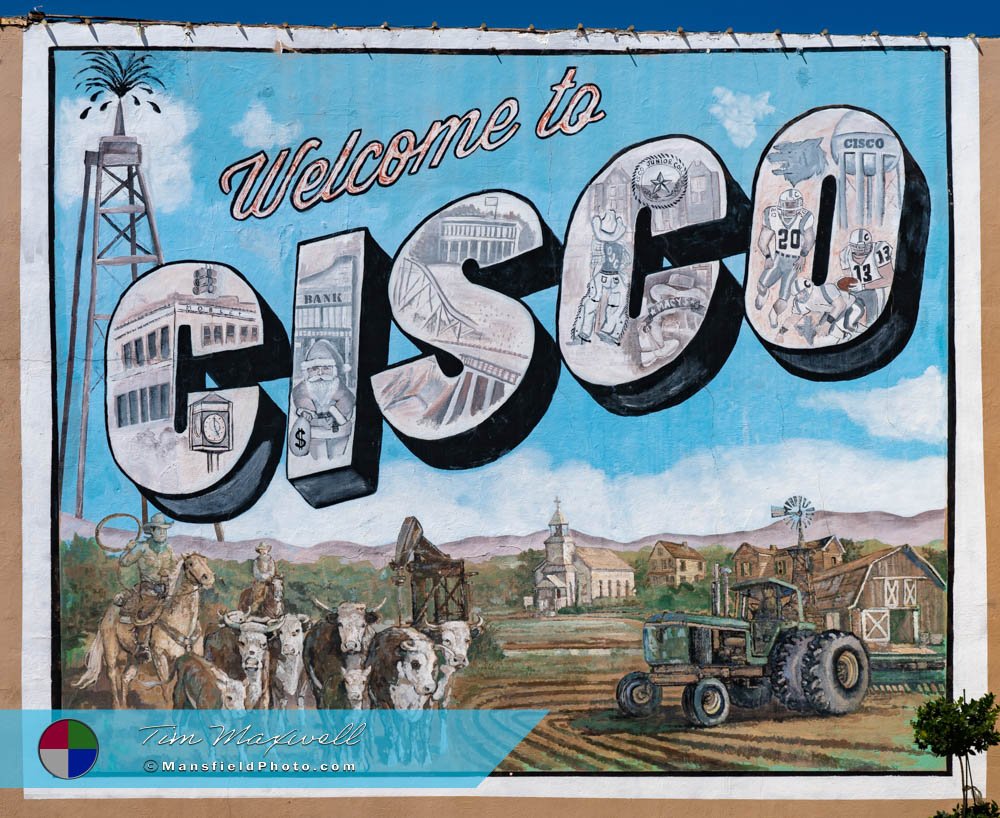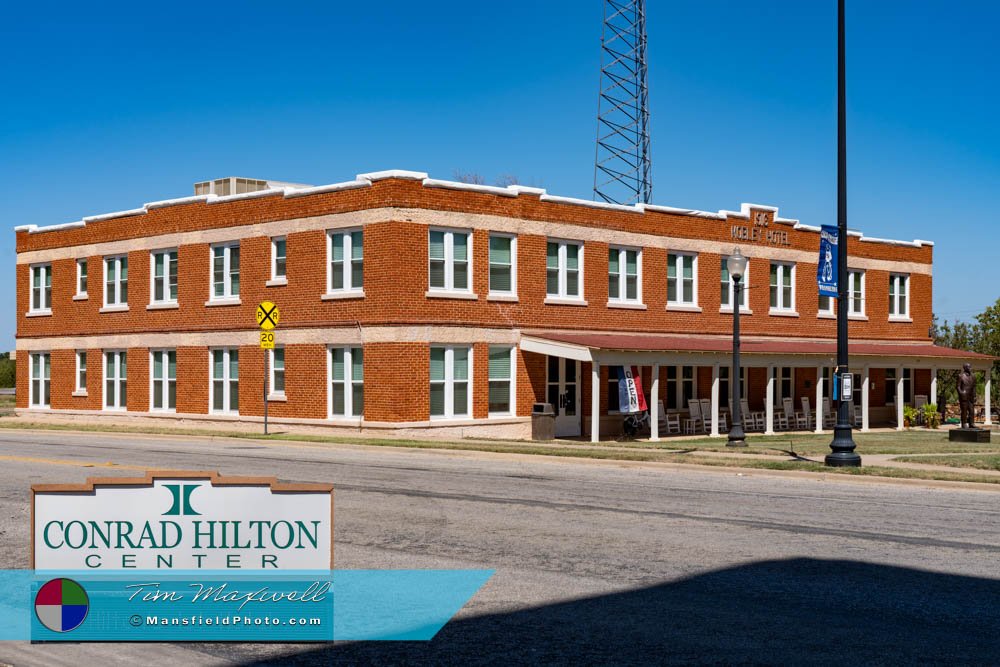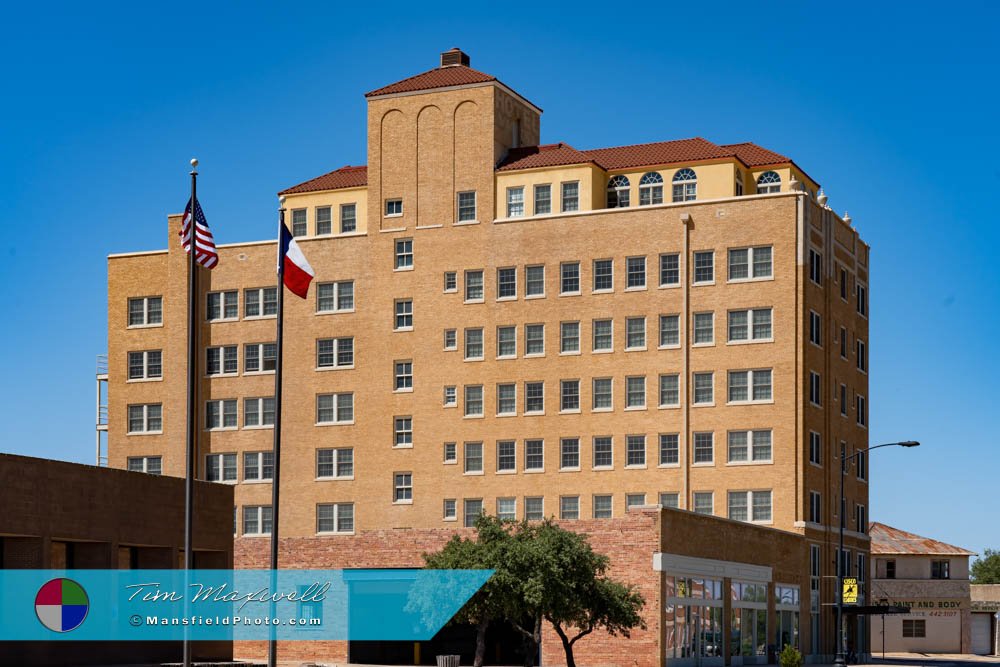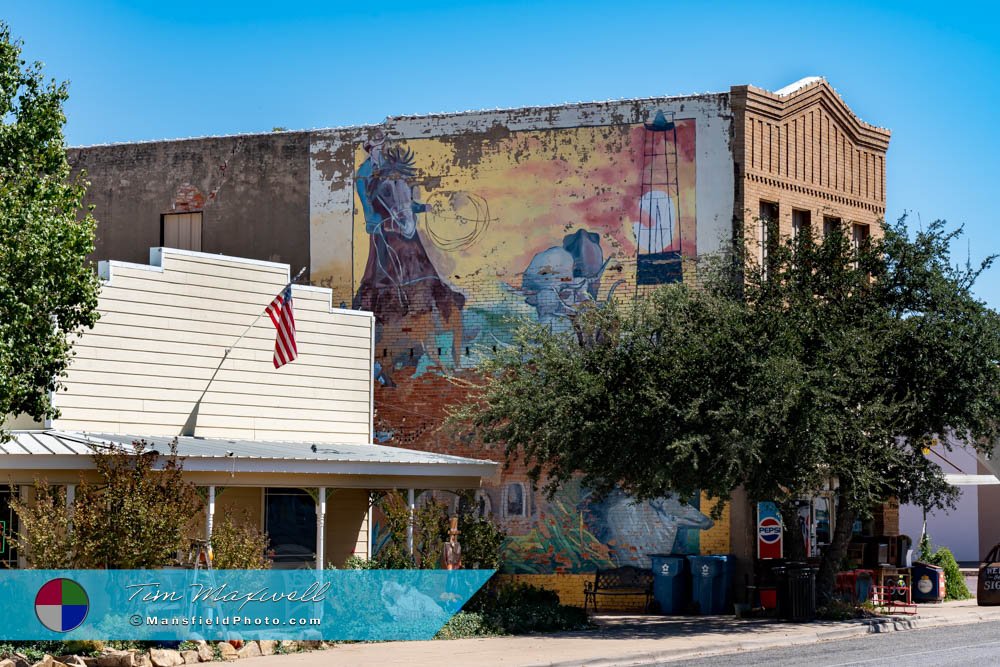Cisco, Texas
– “Gateway to the West” and Birthplace of the Hilton Hotel Empire.
Cisco, Texas, owes its name to the Houston and Texas Central Railway, which reached the area in 1878. The name “Cisco” is believed to have come from John J. Cisco, a railroad financier and vice president of the Texas Central Railroad. As the rail line expanded westward, it sparked the growth of settlements along its route, and the town quickly became a focal point for development. Situated in Eastland County, the area was initially home to cattle ranchers and farmers. However, its fortunes began to shift when the Texas and Pacific Railway entered the picture, playing a significant role in transforming this small settlement into a bustling town in the late 1800s.
The Railroad and the “Gate City of the West”
The arrival of the Texas and Pacific Railway was a turning point in the town’s development. The railroad acquired large tracts of land in the area and began selling lots to immigrants and settlers. Using brochures and promotional material, the Texas and Pacific marketed the town as the “Gate City of the West,” touting its potential as a gateway for commerce and travel further into West Texas.
These efforts paid off, as many newcomers were lured to the town by promises of opportunity and growth. The railroad not only provided an essential transportation link but also became a major employer, helping the town thrive. With its strategic location and rail connections, Cisco grew rapidly, becoming a hub of trade, agriculture, and industry by the turn of the century.
Early Settlement and Growth
Officially founded in 1881, the town quickly established itself as a regional center. As more settlers arrived, businesses sprouted up, and the downtown area became a bustling marketplace for the surrounding agricultural communities. Cotton gins, general stores, and blacksmith shops were common sights, with the railroad ensuring that goods could be transported to larger markets across Texas and beyond.
The town’s central location in Eastland County made it a key player in the economic growth of the region. With the expansion of the railroad network, Cisco’s influence continued to grow. By the early 20th century, the town had become a focal point for ranchers, farmers, and businessmen looking to capitalize on the opportunities that came with Cisco’s rail connections.
Conrad Hilton and the First Hilton Hotel
One of the most fascinating chapters in the town’s history involves Conrad Hilton, the man who would go on to build the global Hilton Hotel empire. In 1919, Hilton arrived in town intending to buy a bank, but when that deal fell through, he instead purchased a local hotel—the Mobley Hotel. Situated close to the railroad, the Mobley catered to traveling salesmen and visitors arriving by train. Hilton saw the potential and quickly transformed the Mobley into a successful business.
The Mobley Hotel became Hilton’s first venture into the hospitality industry, and its success fueled his ambitions to expand. Over time, Hilton would go on to build an international hotel chain, but the Mobley Hotel, located in Cisco, remains a key piece of his legacy. Today, the hotel is a museum, preserving its place in the history of both the town and the Hilton Hotel empire. You might also like to read about Marlin, Texas which was the home of Hilton Hotel #8.
Downtown Charm and Historic Landmarks
The downtown area of Cisco is steeped in history.
Many of the original buildings from the town’s early days still stand, offering visitors a glimpse into the past. The Mobley Hotel, now a museum, remains a cornerstone of downtown, but it’s far from the only historic building in the area. The town boasts an array of structures that date back to the late 19th and early 20th centuries, including the old railroad depot and various storefronts that once served as the heart of the town’s commercial activity.
A walk through downtown offers a chance to experience the blend of past and present. While some buildings have been repurposed into modern businesses, there is a clear effort to preserve the historical character of the area. Small shops, restaurants, and local businesses now line the streets, keeping downtown active and inviting to both residents and tourists.
Boom and Bust: The Oil Era
Like many towns in Texas, Cisco was affected by the oil boom of the early 20th century. In the 1920s, oil was discovered in Eastland County, and the population of the town exploded as workers and speculators rushed to capitalize on the discovery. Overnight, the town transformed into a bustling hub for the oil industry, with temporary housing and businesses springing up to accommodate the influx of people.
During this time, the town’s population reached its peak, and the economy soared. However, the boom didn’t last forever. As oil production declined, the town saw a corresponding decline in population and economic activity. While the oil industry never completely disappeared, the town had to adapt to survive in the post-boom years.
Interesting Facts and Unique Stories
The town is also known for a few unique and quirky stories that add to its charm.
One of the most famous involves the 1927 “Santa Claus Bank Robbery.” On December 23, 1927, a group of criminals dressed as Santa Claus attempted to rob the First National Bank of Cisco, leading to one of the most notorious shootouts in Texas history. The robbery resulted in multiple deaths and a manhunt that captivated the nation.
Present-Day Cisco: A Town Embracing Its Heritage
Today, Cisco is a town that embraces its rich history while looking toward the future. With a population of around 3,500, it maintains a small-town feel, but its historical significance continues to draw visitors. The Mobley Hotel Museum serves as a testament to the town’s role in the early days of Conrad Hilton’s career, while the legacy of the railroad and the oil boom remain integral parts of its identity.
Downtown continues to be a focal point for community life. Local festivals, farmer’s markets, and cultural events keep the area vibrant, and efforts to preserve historic landmarks ensure that the town’s heritage is not forgotten. Visitors can explore the Mobley Hotel Museum, enjoy local dining options, or take a walk through the historic downtown area, where they can see firsthand the town’s blend of history and modern-day charm.
In addition to its historical significance, the town is surrounded by natural beauty. Lake Cisco, just a short drive from downtown, offers outdoor recreation opportunities, including fishing, boating, and camping. The lake is a popular spot for both locals and tourists looking to enjoy the scenic landscape.
Cisco: The Gateway to the West and a Texas Treasure
From its early days as a railroad town to its role in the oil boom, Cisco has played a significant part in the development of West Texas. The influence of the Texas and Pacific Railway, which helped promote the town as the “Gate City of the West,” remains a key part of its identity. The town’s connection to Conrad Hilton and the first Hilton Hotel adds another layer to its fascinating history, while quirky stories like the Santa Claus Bank Robbery give it a unique character. It is on our Texas bucket list of towns to visit.
Today, Cisco continues to thrive as a small town that values its past while embracing the future. Its blend of history, small-town charm, and outdoor recreation opportunities make it a hidden gem in Texas, worthy of exploration by history buffs and casual travelers alike. Whether you’re interested in the legacy of the Hilton Hotel, the town’s railroad roots, or its role in the Texas oil boom, Cisco is a destination rich in stories and significance.
📸 Interested in More Photos of This Town?








